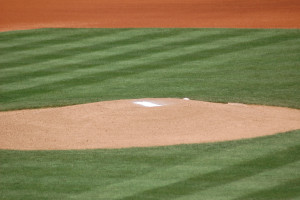What is Impingement Syndrome?

Impingement syndrome is a common shoulder condition where the rotator cuff muscles get sandwiched between the arm bone and the top of the shoulder (acromion). When the rotator cuff muscles continually get pinched between the bones, the body releases a pain response to try and dissuade an individual from repeating the motion that causes the pinching. Swelling can also occur in the area, much like you would see if you were to sprain your ankle. Certain positions, like reaching up behind the back and reaching up overhead (much like the position of the arm for pitching) can make the pain more intense. Pain during the night from this shoulder condition may cause a loss of sleep, and can be a sign of a more serious injury to the rotator cuff, including the development of a small tear or hole.
How Can You Tell If It’s Impingement Syndrome?
A physical therapist can help determine if there is shoulder dysfunction like impingement syndrome in the clinic by listening to a patient’s history, observing the patient’s posture and shoulder positioning, strength testing, range of motion testing and clinical tests. In some cases imaging like X-Ray’s and MRI’s may be taken by a physician to help rule out other types of injuries like a rotator cuff tear.
How Can A Physical Therapist Help?
Luckily this condition can be treated by correcting shoulder position through manual techniques and strengthening weak muscles. It’s common that these individuals will have weak middle and lower trapezius muscles, as well as other scapular (shoulder blade) stabilizers like the serratus anterior. After strengthening these scapular stabilizers we can work on building the strength and endurance back up in the rotator cuff muscles that were previously damaged.
Returning To Baseball
It’s generally safe to return to throwing and pitching once the athlete is no longer having pain and the muscles have regained their strength. If the athlete has missed a lot of time because of the injury, it’s best to slowly return to pitching following an appropriate throwing progression. To prevent this injury from occurring again, the athlete should continue their home exercise program and make sure they continue an overall arm care and conditioning program which they can receive from their physical therapist.

 Appointments
Appointments Impingement syndrome is a common shoulder condition where the rotator cuff muscles get sandwiched between the arm bone and the top of the shoulder (acromion). When the rotator cuff muscles continually get pinched between the bones, the body releases a pain response to try and dissuade an individual from repeating the motion that causes the pinching. Swelling can also occur in the area, much like you would see if you were to sprain your ankle. Certain positions, like reaching up behind the back and reaching up overhead (much like the position of the arm for pitching) can make the pain more intense. Pain during the night from this shoulder condition may cause a loss of sleep, and can be a sign of a more serious injury to the rotator cuff, including the development of a small tear or hole.
Impingement syndrome is a common shoulder condition where the rotator cuff muscles get sandwiched between the arm bone and the top of the shoulder (acromion). When the rotator cuff muscles continually get pinched between the bones, the body releases a pain response to try and dissuade an individual from repeating the motion that causes the pinching. Swelling can also occur in the area, much like you would see if you were to sprain your ankle. Certain positions, like reaching up behind the back and reaching up overhead (much like the position of the arm for pitching) can make the pain more intense. Pain during the night from this shoulder condition may cause a loss of sleep, and can be a sign of a more serious injury to the rotator cuff, including the development of a small tear or hole.